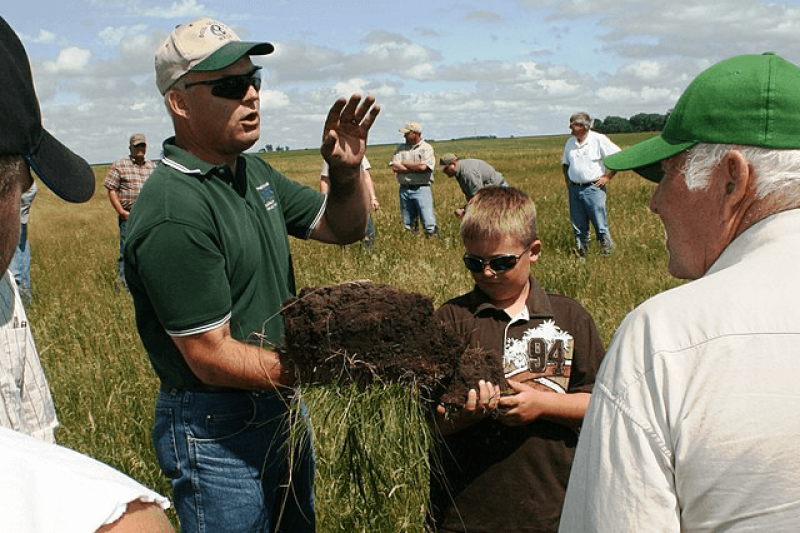A new study demonstrates that state-of-the-art agricultural technology and management can not only reduce that growth, but eliminate it altogether by generating net negative emissions – reducing more greenhouse gas than food systems add.
In fact, employing additional agricultural technology could result in more than 13 billion tons of net negative greenhouse gas emissions each year, as the world seeks to avoid dangerous climate extremes, according to research published Sept. 6 in PLOS Climate.
The work was led by Benjamin Z. Houlton, the Ronald P. Lynch Dean of the College of Agriculture and Life Sciences, and Maya Almaraz, associate research scholar at Princeton University.
“Our study recognizes the food system as one of the most powerful weapons in the battle against global climate change,” said Houlton, a professor in the Department of Ecology and Evolutionary Biology. “We need to move beyond silver-bullet thinking and rapidly test, verify and scale local solutions by leveraging market-based incentives.”
The world’s food system network generates between 21% and 37% of the planet’s greenhouse gas emissions each year. With the global population approaching 10 billion by mid-century, greenhouse gas emissions of the global food system – if left unchecked – could grow to 50% and 80% by 2050, according to the paper.
Previous research has indicated that changing diets around the world is a key to reducing greenhouse gas in the food-system sector. But Houlton and Almaraz believe the emission reduction could be much greater.
If the entire human population adopted a so-called “flexitarian” diet by 2050 – which is promoted by the EAT-Lancet Commission (a group of world experts who established a nutritious, healthy and sustainable diet) – the scientists estimated a gross reduction of 8.2 billion metric tons of greenhouse gas emissions, which falls far short of the net negative emissions goal.
“Our study examines both dietary change and agricultural technologies, as various options for slashing emissions,” Almaraz said. “This included an analysis of carbon sequestration.”
In contrast to the marked benefit of agricultural technology in realizing massive sector-wide negative emissions, dietary changes had little effect on carbon sequestration, according to the study. “We only looked at about a dozen technologies,” Almaraz said. “But there are even more under development, which hold a lot of promise for the food system.”
The new model showed that the most effective way to reduce emissions is to boost soil modifications for crops (biochar, compost and rock amendments), develop agroforestry, advance sustainable seafood harvesting practices and promote hydrogen-powered fertilizer production.
In a process called “enhanced weathering,” for example, silicate rock dust can be added to crop soils every five years to accelerate the formation of carbonates. This process devours carbon dioxide, which can sequester several billion metric tons of carbon per year, according to the paper.
Through agroforestry, planting trees on unused farmland can impound up to 10.3 billion metric tons of carbon annually, while seaweed can be farmed at the ocean surface and then buried in the deep sea, removing up to 10.7 billion metric tons of carbon dioxide.
Supplementing livestock feed with additives could reduce methane emissions by 1.7 billion metric tons and applying biochar to croplands may reduce nitrous oxide emissions by 2.3 billion metric tons.
Food-system environmental action needs to start regionally. Houlton said that anaerobic digesters have been converting manure from New York’s dairy farms into electricity since the mid-1970s, reducing emissions, supporting energy self-sufficiency, and assisting in water quality improvements. The biogas resulting from the waste becomes energy that local electric companies can easily use, but this approach must avoid gas leaks and financial incentives are still necessary. “We need a portfolio of solutions that are effective locally but have global impact,” he said.
“If people choose to switch to healthier diets, as suggested by EAT-Lancet – and if they can afford it – great,” Houlton said. “But to get the world to net negative greenhouse gas emission – a global imperative to avoid the most dangerous climate impacts – we need to rely heavily on agricultural technology and management techniques.”































